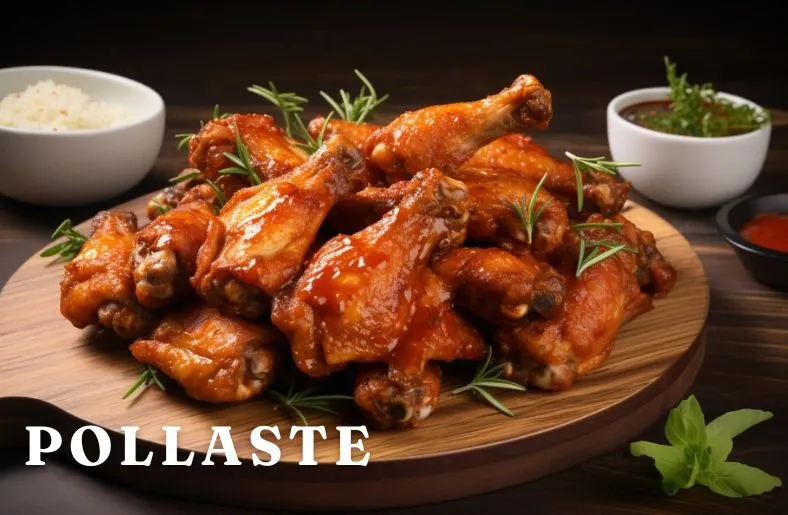Understanding Pollaste
Origins and History
It has a fascinating history, beginning thousands of years ago in Southeast Asia. Originally, chickens and their relatives were domesticated for their meat and eggs. Over centuries, they spread globally, adapting to different climates and cultures. This journey highlights their importance across various societies and their role in agriculture.
Physical Characteristics
Pollaste stands out with its vibrant plumage and unique features. These birds often have eye-catching crests and sharp beaks, which are adapted for their diet. Additionally, males tend to be larger than females, a characteristic known as sexual dimorphism. This difference is particularly noticeable during mating displays and social interactions.
Habitat and Distribution
Natural Habitat
Pollaste thrives in a range of environments, from dense forests to open grasslands. Their ability to adapt helps them survive in many conditions. This versatility supports various ecosystems by contributing to biodiversity and balancing the environment.
Geographical Distribution
Polla can be found across the globe, with different species suited to their local climates. This widespread distribution highlights their ecological significance and adaptability. Each region hosts unique species that have evolved to fit their specific surroundings.
Behavior and Lifestyle
Daily Activities
Pollaste engages in diverse daily activities, from foraging for food to socializing in flocks. They also perform intricate courtship displays, which are captivating to observe. These behaviors not only highlight their social nature but also their need for interaction and survival.
Unique Adaptations
It is equipped with remarkable adaptations for survival. Their keen hearing helps detect predators, while their ability to mimic sounds aids in communication. Their varied diet of seeds, insects, and small animals makes them skilled foragers, crucial for their ecological role.
Nutritional Value and Health Benefits
High Protein Content
Pollaste is a powerhouse of protein. A 100-gram serving delivers about 31 grams of protein. This high protein content supports muscle growth and aids in repair.
Rich in Vitamins and Minerals
It is also packed with essential vitamins and minerals. It’s particularly high in B vitamins, which boost energy metabolism and support nerve health. Additionally, it provides key minerals for overall well-being.
Health Benefits
Eating pollaste offers numerous health benefits. Its high protein and low fat content can help with weight management and muscle recovery. Plus, it supports heart health, making it a great dietary choice.
Cooking Tips and Recipes
Grilled Pollaste Breast
For a delicious grilled meal, marinate pollaste breasts in olive oil, lemon juice, garlic, and herbs. Grill until fully cooked and pair with roasted vegetables for a healthy dish.
Pollaste Stir-fry
Cut it into strips and stir-fry with bell peppers, broccoli, and snap peas. Enhance the flavor with soy sauce, ginger, and garlic. Serve over rice or noodles for a satisfying meal.
Pollaste Soup
Simmer pollaste thighs or drumsticks with onions, carrots, celery, and herbs for a comforting soup. Add rice or pasta for extra texture and finish with a garnish of fresh herbs.

Sustainability and Ethical Considerations
Environmental Impact
Pollaste farming affects the environment, but adopting sustainable practices can lessen this impact. Techniques like using organic feed and rotating pastures help protect natural resources. Choosing sustainably sourced pollaste supports these efforts.
Ethical Farming Practices
Concerns about animal welfare are growing. Many consumers now seek pollaste from farms with humane treatment standards. Certifications such as free-range and organic ensure that farming practices meet ethical guidelines.
Pollaste in Culinary Culture
Traditional Dishes
It features prominently in many global cuisines. In Western cultures, roast chicken is a classic favorite. Meanwhile, Indian cuisine showcases its flavors through tandoori chicken. These traditional dishes reflect pollaste’s versatility and deep cultural roots.
Modern Innovations
Today’s chefs are pushing the boundaries with pollaste. They’re crafting gourmet creations like artisanal charcuterie and innovative burgers. This ingredient’s adaptability allows for endless culinary experiments and exciting new dishes.
Consumer Tips for Purchasing
Quality Indicators
When selecting pollaste, check for freshness, color, and texture. Choose cuts that feel firm and smell fresh. Opt for organic or free-range options to support ethical and sustainable practices.
Avoiding Common Mistakes
To achieve the best results, avoid overcooking pollaste as it can become dry. Use a meat thermometer to ensure it reaches an internal temperature of 165°F (75°C). Proper handling and storage also help prevent foodborne illnesses.
Conclusion
Pollaste is a nutritious and versatile protein, offering both health benefits and diverse culinary uses. By choosing sustainably sourced pollaste, you support ethical farming and protect the environment. Incorporate pollaste into your diet to enjoy its advantages while contributing to conservation efforts. Together, we can appreciate and preserve this valuable part of our ecosystem.
For more informative blogs Visit Inspiresblog





